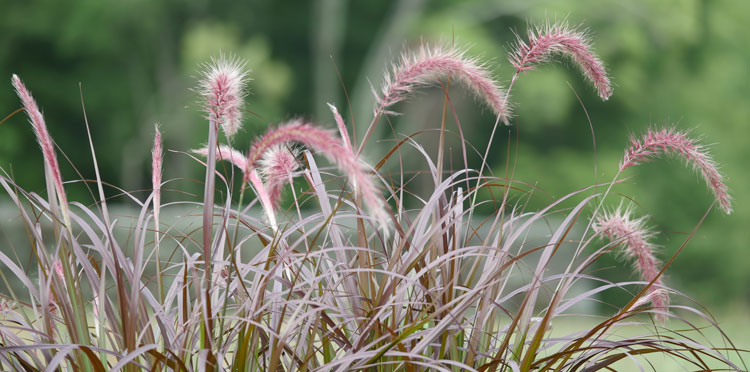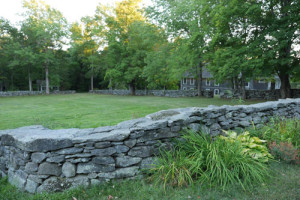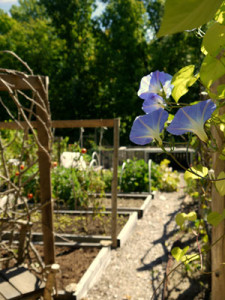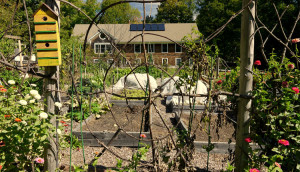Interview Lama Rod Owens 2016 BCBS Insight Journal
 IJ: People are trying to engage in this work, but somehow feel that they aren’t fully succeeding. People are trying to get to a deeper level of honesty, but don’t even know what a deeper level of honesty would look like.
IJ: People are trying to engage in this work, but somehow feel that they aren’t fully succeeding. People are trying to get to a deeper level of honesty, but don’t even know what a deeper level of honesty would look like.
 IJ: In your book, Radical Dharma, you quote Elie Wiesel: “The opposite of love isn’t hate. It’s indifference.” Is the diversity issue more about indifference than about racial biases?
IJ: In your book, Radical Dharma, you quote Elie Wiesel: “The opposite of love isn’t hate. It’s indifference.” Is the diversity issue more about indifference than about racial biases?
 LRO: If white practitioners knew how to do it, they would already have done it. This is basic social change theory—what Paulo Freire was talking about in Pedagogy of the Oppressed.Freire really put it out there when he said that it’s really up to the oppressed to liberate the oppressor.
LRO: If white practitioners knew how to do it, they would already have done it. This is basic social change theory—what Paulo Freire was talking about in Pedagogy of the Oppressed.Freire really put it out there when he said that it’s really up to the oppressed to liberate the oppressor.
 LRO: Don’t get me wrong. We need silent retreat space. There’s no way to get around that. For me, silent retreat has been absolutely essential. We need that space to go deep inside and be alone with ourselves. And I don’t know any other technology that can produce the kind of transformation that we can get from silence. But when it’s not a silent retreat, there should be more space built in for interaction. That’s what I’m really saying.
LRO: Don’t get me wrong. We need silent retreat space. There’s no way to get around that. For me, silent retreat has been absolutely essential. We need that space to go deep inside and be alone with ourselves. And I don’t know any other technology that can produce the kind of transformation that we can get from silence. But when it’s not a silent retreat, there should be more space built in for interaction. That’s what I’m really saying.
 IJ: In your book, you and Rev. angel Kyodo williams asked people to reflect upon how they understand people of color to be central to the practice. What kinds of responses did you get from white practitioners?
IJ: In your book, you and Rev. angel Kyodo williams asked people to reflect upon how they understand people of color to be central to the practice. What kinds of responses did you get from white practitioners?

Insight Journal: There’s a lot of talk about diversity going on right now in every Western Dharma center. People are attending workshops, reading books and articles, having meetings. What is it about this work that people might still be missing?
Lama Rod Owens: The question I get asked over and over is, “What do I do?” There’s an intellectualization of the work of diversity and inclusivity, but there aren’t many steps being taken. I think a lot of it has to do with fear—fear of saying or doing the wrong thing, but also fear of exposing some of these deeply internalized biases that we’ve been raised with and are deeply ashamed of.
Part of my work is supporting white practitioners in creating spaces where they can practice a level of vulnerability and honesty with other white people. In order to move forward, we have to be able to articulate what’s happening for us.
IJ: Many suggest fixing the problem by offering more POC scholarships and training more POC teachers.
LRO: POC scholarships and POC teachers don’t mean anything if you have a community that hasn’t looked at and dealt with its exclusivity. You can invite people of color into a sangha, but it doesn’t mean that they’re going to be comfortable or happy.
To create inclusive communities, we have to start being honest about where we’re at and what we’re struggling with. A lot of white practitioners want something to do that isn’t that. Because that’s the hardest—and also the most critical—thing to do for those conversations with one another to happen.
As a Black teacher, I don’t feel comfortable in a lot of sanghas. I might even be headlining a retreat, but if the sangha hasn’t done the work of dialoguing and exploring the ways in which the community excludes others, then it’s still not a safe space for people of color or people of some difference that’s not represented in that sangha.
 IJ: People are trying to engage in this work, but somehow feel that they aren’t fully succeeding. People are trying to get to a deeper level of honesty, but don’t even know what a deeper level of honesty would look like.
IJ: People are trying to engage in this work, but somehow feel that they aren’t fully succeeding. People are trying to get to a deeper level of honesty, but don’t even know what a deeper level of honesty would look like.
LRO: A good place to start is looking at how comfortable you are in doing this work. I would say it’s best to as much as possible push out into really uncomfortable spaces and then explore what those spaces look like.
I talk a lot about being messy. We’re always focused on how we’re looking in a conversation. Throw all that out the window—all this etiquette of trying to look good and respectable. I determine the level of effectiveness of a conversation by how messy things get. That messiness is an indicator of the honesty that we’re getting into, because people are reacting to that honesty and being triggered. That’s a really good thing. If we’re not getting messy, we’re not doing the real work that needs to get done.
IJ: I’ve seen people who try to express their dissatisfactions/disagreements with the methods and approaches of the diversity movement get shut down and told that they just haven’t done the work yet.
LRO: That’s an expression of their not being enough space for the conversation. People being able to say, “I don’t think this is working,” is critical for any process. Can we respond to criticism by saying, “Okay. Let’s explore this. What are you seeing? How are you seeing it? What are you experiencing?”
How do we actually practice openness—where everyone can show up fully and have different opinions? White-only spaces can sometimes be very harsh. That harshness often comes from guilt and regret that may surface while dealing with these issues. They might then project some of that onto the people around them in a way that can be really emotionally violent.
When we enter into conversation with people of color, it’s really about the willingness to listen fully and be completely present—simply allowing those voices to be in the room and to be held. It’s so critically important for that to happen in mixed groups.
IJ: What is it in the room that you’re picking up on that makes you uncomfortable when you enter into some of these sanghas?
LRO: A lot of people use sangha to avoid, so everyone sometimes comes into sangha space and agrees to keep all this other stuff outside. They’re thinking something like, “When I come into this space, I want it to be safe, I want it to be comfortable, and I want it to resonate with me.”
When I show up, I try to create a space that can hold you and everything that’s coming up for you. That’s where Dharma teaching happens for me. So if I show up and talk about race and Buddhism, you may be totally against it, but I want to create space for all of that to be present.
We’re tired of being reminded of our suffering, so sanghas can become places that we associate with feeling good. I’ve always seen sangha as a workshop where I’m invited into relationship with my own discomfort. To feel good or to feel comfortable is secondary. The teacher’s purpose is to reflect that relationship back to you, so I’ll model what it looks like to be in relationship with my own discomfort.
There are many aspects of our experience that we habitually avoid and distract ourselves from. That’s natural because we don’t want to suffer any more than we need to. But Buddhadharma teaches that we’ll never achieve liberation if we don’t create the capacity to hold our suffering and understand the true nature of that suffering. Until we’re willing to develop a relationship to our suffering, we won’t ever see the kind of realization that we should be seeing.
 IJ: In your book, Radical Dharma, you quote Elie Wiesel: “The opposite of love isn’t hate. It’s indifference.” Is the diversity issue more about indifference than about racial biases?
IJ: In your book, Radical Dharma, you quote Elie Wiesel: “The opposite of love isn’t hate. It’s indifference.” Is the diversity issue more about indifference than about racial biases?
LRO: It’s hard to care about and deal with this stuff if you don’t have to. It’s hard to not only deal with your suffering, but to be told that you also have to hold other people’s suffering.
Sometimes I feel like my primary job is creating a case for you to care. But if we’re really authentic and dedicated Dharma practitioners, shouldn’t compassion be one of our main practices? Shouldn’t we be naturally engaged in the suffering of those around us?
After the Orlando shooting, I was giving a teaching in an all-white, mostly all-straight, sangha. I remember sitting there feeling like, “Wow. These people really do not care.” It was evident from the questions they were asking at the end of the Dharma talk. So much of whiteness and white communities is this individualization. There’s a real lack of the feeling of true community.
IJ: Many Westerners who come to the Dharma are introverts looking for an individual, contemplative practice. Then they’re asked to care about this and care about that. Many might feel, “All these social issues aren’t what I came for. That’s not in me.”
LRO: That’s when we miss the point of sangha. We miss that the person sitting next to me is going through the same thing, and that if we could create dialogue and relationship, we could help each other move towards enlightenment more quickly than we could on our own.
That sense of individualization is a big hindrance. In my perspective coming from the Black community, it’s always about “us.” That’s why movements like Black Lives Matter are so powerful for many of us. Those movements are powered by the sense that our lives are being devalued—not just one person’s life, but all of our lives. And the belief that we can work together to make things better.
Right now, most sanghas are not asking what it means to be a community and working together to create that sense of community. Until that happens, I think we just continue replicating these white, middle-class aesthetics in our sanghas.
When I walk into a space, in my mind, I walk into a community. That may be very different from what others are feeling. That can be challenging for people who don’t necessarily want to be part of the whole. We have this great American idealism that talks about pulling myself up by my own bootstraps and achieving my own success, which doesn’t depend on anyone else.
That’s not what sangha is. Sangha means depending on other people. If you’re not there to depend on other people, you’re wasting your time.
IJ: We’ve seen Hinayana, Mahayana, and Vajrayana. Does it feel like the next yana will be a mitta-yanaor sangha-yana, where the third jewel is emphasized and related to in a new way? Do POC practitioners need to lead the way for this next movement? Because it seems like white practitioners might not know how or be able to do this.
 LRO: If white practitioners knew how to do it, they would already have done it. This is basic social change theory—what Paulo Freire was talking about in Pedagogy of the Oppressed.Freire really put it out there when he said that it’s really up to the oppressed to liberate the oppressor.
LRO: If white practitioners knew how to do it, they would already have done it. This is basic social change theory—what Paulo Freire was talking about in Pedagogy of the Oppressed.Freire really put it out there when he said that it’s really up to the oppressed to liberate the oppressor.
At first, I felt this was so unfair. And it’s not fair, but no social movement that I’ve known of or been a part of has ever not come from the marginalized reflecting violence back to the oppressor—to show the oppressor what’s really happening.
I don’t know if Black folks should be showing white practitioners what to do, but I do think that there’s a lot of value in creating communities from the perspective of marginalized people, and we’re starting to see some examples of that happening. In that model we can create a sense of community and then invite white people to join—all in a way that can be very healing.
IJ: Is that the next step—for marginalized groups to form their own sanghas from the ground up?
LRO: I’ll always be working with Dharma institutions to create change, but I know that eventually my energy will have to go more into creating communities where people of color feel safe and can do their practice. That’s what I feel will most help to heal the greater Western sangha.
IJ: You talk about sangha being a place where people can push themselves to feel uncomfortable and get messy. But then I hear you saying that people of color don’t feel safe and comfortable in these sanghas. Is sangha, then, a place to disturb the comfortable and comfort the disturbed?
LRO: To me, safety means feeling like I can be myself. But I don’t think that white people are being themselves either. I don’t think that anyone is actually feeling safe in the sangha, because we’re just performing versions of ourselves. The process of moving towards authenticity will be uncomfortable because we’re not used to the people that we really are.
That’s what I mean by discomfort—moving towards a place of being more authentic with ourselves so that we can manifest our deepest aspirations, which are to be in harmony and be in community. Ultimately, that’s what we really want. Even if we weren’t raised to do that, we are in human bodies, and we have these brain structures that are about being in relationships and being in tribes and communities. When we fight against the natural pull towards being intimate with one another, we feel disoriented.
As a person of color, sometimes when I enter into a sangha I feel unsafe because I don’t know what to trust. Not only that, I’m being told not to trust myself because I’m being told not to show up completely as myself. So that’s already dangerous because so much of the oppression of marginalized people comes from being told how we should be in spaces. That’s where control and power really begin. And that’s oppression.
IJ: In Radical Dharma, you say, “I need to be a part of spaces where I feel loved, and I don’t feel loved in some of these spaces. Me leaving these spaces is self-care.” In some ways, we all feel this. What are the specific differences between my feeling uncomfortable, unaccepted, unwelcomed, and what a person of color might feel in those same spaces?
LRO: Systematically, as a Black man, I don’t feel loved. I don’t feel like this society wants me to be happy. I feel like this society just wants me to be in the world to produce wealth for others. That’s how I feel as a Black man. So when I come into sangha, I’m carrying that and feeling when that value system is replicated.
IJ: In what way is that value system being replicated within the sangha?
LRO: By being told that you have to show up in a different way. Not only do you have to do things to fit into society to be safe, but you also have to do things to fit into a sangha to feel welcome and safe.
IJ: Like what?
LRO: For instance, I come from the Black community where speech is highly valued. And I grew up in white spaces and schools where I was punished for practicing the playful aspects of speaking. The way that I communicate is actually as old as the African communities and tribes that my ancestors came from.
Sometimes I get criticized for being too self-referential, talking too much, talking idly, and so forth. But what I’m actually doing is practicing my culture—as a Black person. I’m being criticized for showing up in a way that’s very much a part of my culture. Things like talking shit or cracking or playing the dozens: those are strategies we used to survive and negotiate systematic oppression. We had power to verbally shape our reality, even if it was just in our interpersonal relationships. But when I bring that to the cushion it can be very challenging for white people.
People sometimes say, “Lama Rod, you’re not practicing right speech. You’re not as quiet and reflective as these other teachers.” I understand where people are coming from, but at the same time, I have to be honest and say, “Actually, this is how I was raised. And all the years of intensive meditation retreat has done nothing to curb that.”
I’ve spent more time on silent retreat than most people in Dharma. So if all that silence did nothing to curb this tendency, I don’t know what else can.
IJ: Then do we need a whole new way of understanding what a retreat looks like? Are silent retreats not culturally or racially welcoming or supportive?
 LRO: Don’t get me wrong. We need silent retreat space. There’s no way to get around that. For me, silent retreat has been absolutely essential. We need that space to go deep inside and be alone with ourselves. And I don’t know any other technology that can produce the kind of transformation that we can get from silence. But when it’s not a silent retreat, there should be more space built in for interaction. That’s what I’m really saying.
LRO: Don’t get me wrong. We need silent retreat space. There’s no way to get around that. For me, silent retreat has been absolutely essential. We need that space to go deep inside and be alone with ourselves. And I don’t know any other technology that can produce the kind of transformation that we can get from silence. But when it’s not a silent retreat, there should be more space built in for interaction. That’s what I’m really saying.
Even for regular weekly sittings, we don’t always have to come and just sit and have a Dharma talk and Q&A. Maybe there can be a discussion facilitated by a teacher or sangha leader, which can be just as beneficial as sitting or listening to a Dharma talk.
IJ: Holding a discussion space is not training that all Dharma teachers have. Would this require another kind of Dharma teacher or a different kind of teacher-training or something else?
LRO: I would say that teacher-training is the key. Dharma teachers aren’t trained to do a lot of things. My personal goal was to become a Buddhist minister. Ministry is such an important word because it opens the door for counseling and conflict resolution and facilitation—all the things that ministers are trained to do in their congregations. I’m right now studying for a Master’s of Divinity so I can get the skills to be a well-rounded Dharma teacher and Buddhist minister.
In one teacher-training program I’m involved with, we’re speaking to many aspects of what it means to be a teacher—not just the basic instructions and science of meditation, but also conflict-resolution, counseling, diversity and inclusivity issues, and ethics.
IJ: In your book, you tell the story of a black man who was on silent retreat for the first time who “…explained to the white male teacher that he felt lonely and marginalized in the sangha as the only person of color. The teacher suggested that this was something the young man struggled with outside of the sangha. The young man agreed. The teacher advised him to just sit with what he was feeling. The young man wanted more and did sit with the feelings and knew that the sangha and that teacher were not safe.” What else could that Dharma teacher have said to that young man?
LRO: Actually, that young man was me. And just by looking around and seeing that I was the only person of color in the room, the teacher could perhaps have acknowledged that there was something real about what I was experiencing—that marginalization wasn’t just happening in the world, but also right there in that sangha as well.
And that teacher could have taken responsibility for being the teacher of an organization that was struggling with issues of inclusivity and diversity. He could have said that I was justified in feeling marginalized. Yes, sit with it, but also this is a real issue that probably you, as a person of color, are the only one having to deal with. And to just acknowledge that.
I still probably wouldn’t have felt safe enough to continue in that sangha, but I would have at least felt heard.
IJ: Is Western Dharma participating in the broader diversity movement, or is it a separate movement?
LRO: I think that the issues are the same because Western Buddhist communities are just an expression of the larger society. Maybe our methods will be different because our methods will be informed by Buddhadharma. But we should be making attempts to see our struggles within sanghas as very similar to the struggles in the general society around us.
IJ: What can the Dharma add to this larger movement?
LRO: We have this incredible capacity to hold space for suffering. Buddhadharma is so much about cultivating an expansive mind where we’re able to look at and experience everything. I think that’s what we can bring. There’s so much tightness and contracting right now in the larger movements, especially Black Lives Matter, that we can come in and ask, “How can we hold space for what we’re feeling and how we’re feeling it—without reacting to it?”
I see a lot of reaction in the larger movement. There’s a major lack of self-care and knowing how to work with anger and rage. As practitioners, we have insight into the nature of anger and rage that can be really beneficial, and that’s where Radical Dharma comes from. Really, Radical Dharmacame out of our intersectionality, where we have one foot in Black Lives Matter and one foot in the sangha movement. But from my perspective, I don’t see it as being different.
 IJ: In your book, you and Rev. angel Kyodo williams asked people to reflect upon how they understand people of color to be central to the practice. What kinds of responses did you get from white practitioners?
IJ: In your book, you and Rev. angel Kyodo williams asked people to reflect upon how they understand people of color to be central to the practice. What kinds of responses did you get from white practitioners?
LRO: For me, that question is asking, “How can we begin to honor the voices of people of color practitioners in our communities?” Our practice is predicated upon how we engage the other and how we bring the other into relationship and intimacy, where we’re actually looking very closely and clearly at the ways in which we create separation. We need the other—marginalized people, people of color—to bring back into focus the ways in which we’ve created the other.
IJ: Some people are really hopeful about this diversity work, and others are saying that not enough is being done and what is being done isn’t being done well. How does it feel to you? Are we getting anywhere?
LRO: I think we are getting somewhere—absolutely. But it’s easy for me to get secluded in communities that are working really hard. Then I look outside of that group at the larger society and realize we haven’t gone as far as I thought.
It takes a lot of work. And I think it will continue to take a lot of work. It’s similar to the path of enlightenment—coming back to each life and continuing to dedicate ourselves to achieving realization. It’s just like the work of inclusivity. We have to do it over and over again and put the work in. But we can alsobe developing ways of doing the work that are more sustaining and healing for us. And that’s what I want to see.
IJ: What would that look like?
LRO: Having communities created by people of color and then inviting others into that space. You can transform a structure by creating an alternative structure as a comparison. Then people can look over and say, “Okay. I see what you all are doing. I see what this really means.” I don’t think we have many examples of what we’re hoping to see yet. Right now we’re still just talking about a dream. This dream of inclusivity—what does it look like?
IJ: This entire interview so far has focused on diversity. Meanwhile, you’re a lama with very deep meditative experience and insight. Do you get tired of just being asked about diversity all the time?
LRO: If I take the whole thing about being a bodhisattva seriously, then I have to accept that I go where I’m needed. And I feel that this is the conversation I need to be in. So that’s okay for me, because this work is alleviating suffering for people. I also feel like a lot of people can teach basic Dharma, but not a lot of us can have these complex, nuanced conversations around identity and Dharma.
IJ: Are there any important points that we haven’t covered?
LRO: One of the main ways we can help to nurture inclusive communities is by supporting and holding teachers accountable. We need to help teachers feel supported in doing this work and also creating structures where teachers are held accountable for what they’re doing and how they’re teaching. I see a lot of sangha members doing a lot of work, and I don’t see a lot of teachers doing that work. It would be so much more beneficial if we invite our teachers to do the work with us.
IJ: Are you seeing a lot of work that Dharma teachers still need to do?
LRO: We have a lot of work to do. I think my generation of teachers is really inspired by some of the work that we’re doing together as a community. And we just have to keep that going. We’re leaders, and if we don’t care, then our sanghas won’t care either.
IJ: Is there a practical way of holding teachers more accountable—either within the sangha or as a larger group?
LRO: You just have to ask them, “What are you doing? What should we do? How have you helped with this issue?”
I think sometimes we’re afraid of seeming disrespectful, but I think it’s really respectful to simply ask, “What can you do more? What do you know about this issue? Do you need help to learn more about this issue?”
No comments:
Post a Comment